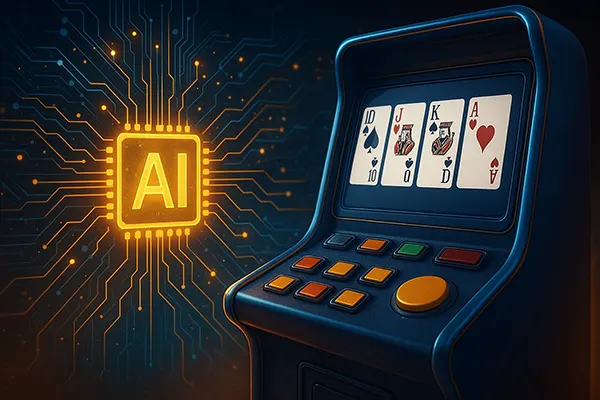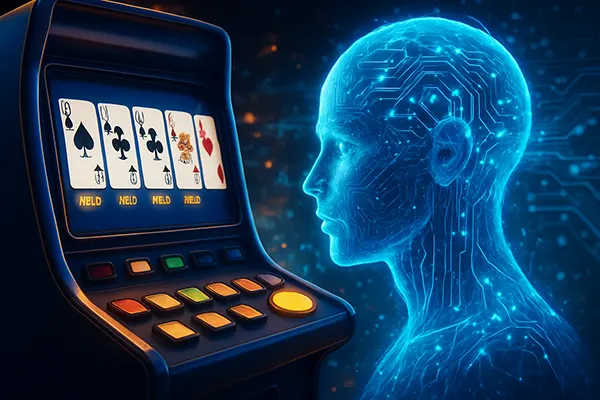How RNG in Video Poker Has Evolved: From Classic Systems to Artificial Intelligence

Random Number Generators (RNGs) are the core mechanism behind video poker, ensuring fairness and unpredictability. As technology progresses, so does the complexity of these algorithms. In recent years, RNG systems have transformed from basic number sequences into sophisticated models incorporating elements of artificial intelligence (AI). This evolution reshapes not just game mechanics, but also the experience and security offered to players.
Traditional RNG Systems in Video Poker
In the early stages of video poker, RNGs were relatively simple. They relied on basic mathematical formulas to generate number sequences, mimicking the randomness of a shuffled deck. These generators operated independently of the player’s input, producing results within milliseconds to simulate spontaneity.
Despite their simplicity, these early RNGs were certified for fairness. Regulatory authorities conducted regular checks to ensure compliance with gambling standards. Still, their predictability remained a concern, especially in outdated or poorly maintained machines where patterns could eventually be exploited.
Furthermore, these systems typically used linear congruential generators (LCGs). While effective in early days, LCGs presented limitations in randomness over long periods, prompting the industry to seek more advanced solutions as computing capabilities grew.
Challenges with Legacy RNG Models
The biggest weakness of traditional RNG systems lies in their reliance on limited entropy sources. As expert analysis became more accessible, particularly online, some players and developers began scrutinising these systems for patterns.
Security concerns were another issue. Without regular updates and re-certification, older RNGs could be reverse-engineered. This exposed operators to legal and reputational risks, especially in jurisdictions with stricter enforcement of fairness standards.
These challenges led to a growing demand for enhanced randomness, better encryption, and increased transparency. The groundwork was being laid for more complex, machine-learning-based models.
Advanced RNG Techniques and Machine Learning
By the 2010s, RNGs saw substantial improvement through cryptographic techniques. These used advanced hashing and encryption to ensure outcomes were nearly impossible to predict. Such RNGs were widely adopted by regulated digital poker services to meet international standards.
Simultaneously, developers started exploring adaptive systems. These don’t just generate numbers randomly but learn from patterns in usage to adjust and refine randomness over time. While this might sound counterintuitive, it allowed operators to balance fairness with enhanced gameplay experiences.
Importantly, AI started to complement, not replace, RNG mechanisms. Through supervised learning, models could detect unusual patterns (such as potential fraud) or optimise user experience based on observed behaviour, all while maintaining strict fairness protocols.
The Rise of Behaviour-Aware Systems
Newer systems now integrate behavioural analysis to support responsible gaming initiatives. AI tools within RNG engines can identify addictive patterns and adapt payout behaviour accordingly, in line with regulatory requirements.
This doesn’t affect fairness but helps reduce harm. For example, if a player shows signs of compulsive play, the system might recommend a pause or provide spending limits.
Furthermore, these models are frequently audited, with logs and metadata stored for compliance review. This ensures accountability in the face of evolving technical and ethical standards.

Future of RNG: Artificial Intelligence and Quantum Elements
Looking ahead to 2025 and beyond, RNG systems in video poker are on the brink of incorporating quantum random number generators (QRNGs). These use physical processes like radioactive decay or photon emission for true randomness—far beyond what classic or even cryptographic models can achieve.
In parallel, AI continues to evolve. We’re seeing experimental systems where generative AI helps simulate hyper-realistic player scenarios to test RNG responses under millions of conditions. This enables robust stress testing and further refines the fairness model.
As regulators demand higher transparency, hybrid AI-RNG architectures are becoming more common. They merge strict randomness with intelligent oversight, providing both unpredictability and traceability in a single system.
Transparency and Trust in the AI Era
Trust remains central. Operators must be able to demonstrate that AI-enhanced RNGs aren’t biased or manipulated. To address this, open-source algorithms and third-party audits are gaining ground in the industry.
Additionally, some services now allow players to verify RNG seeds and logs via blockchain verification. This adds an immutable layer of transparency, offering peace of mind for users who prioritise fair play.
Despite the tech advancements, regulatory compliance still governs all systems. Every change or upgrade to the RNG must be certified by recognised authorities to maintain operational legality.
